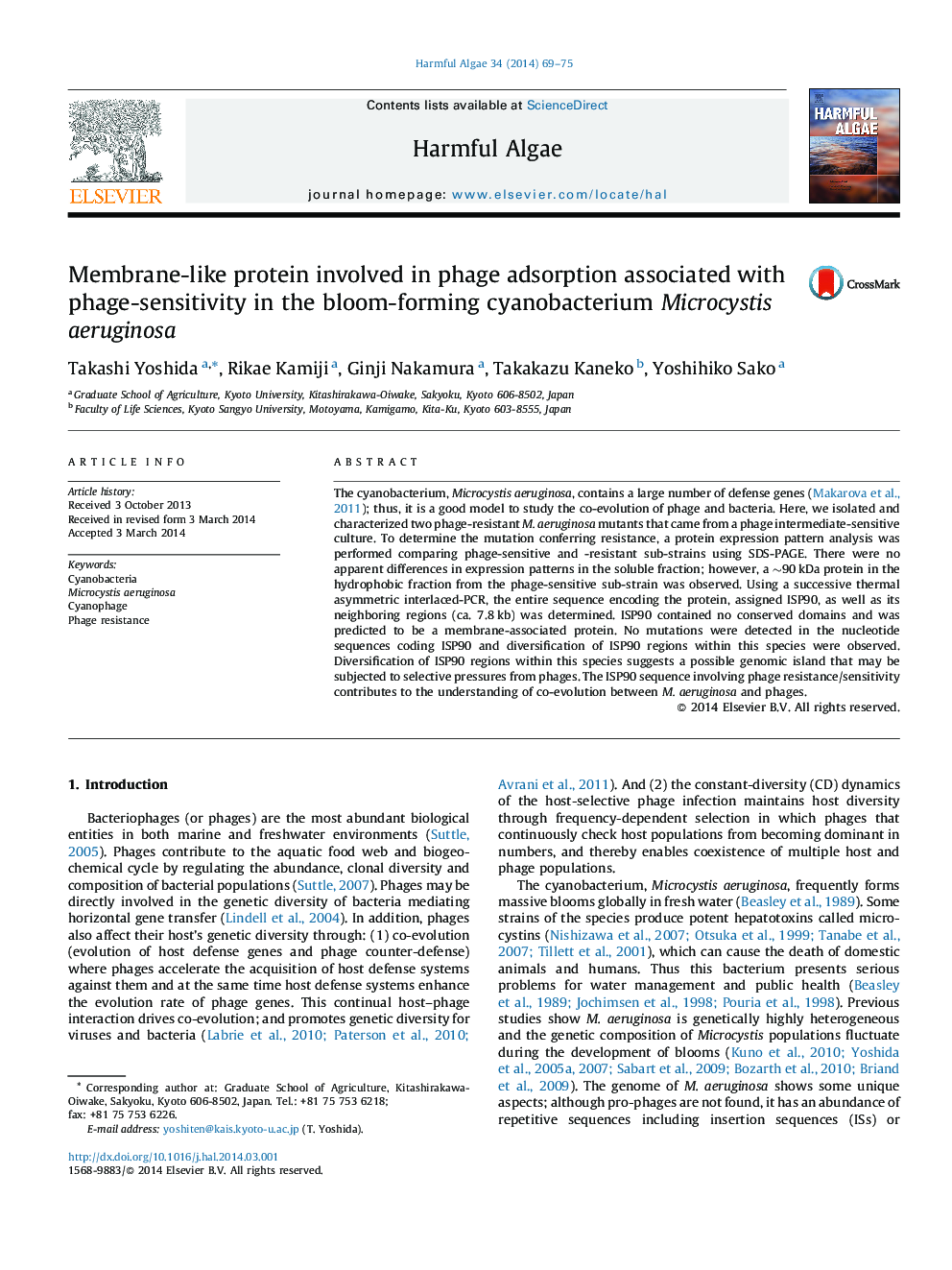| Article ID | Journal | Published Year | Pages | File Type |
|---|---|---|---|---|
| 4545406 | Harmful Algae | 2014 | 7 Pages |
•We isolated and characterized the phage-sensitive strain of Microcystsis aeruginosa.•We detected a protein involved in phage-sensitive of Microcystsis aeruginosa.•We found gene variations involved in phage resistance Microcystsis aeruginosa.
The cyanobacterium, Microcystis aeruginosa, contains a large number of defense genes ( Makarova et al., 2011); thus, it is a good model to study the co-evolution of phage and bacteria. Here, we isolated and characterized two phage-resistant M. aeruginosa mutants that came from a phage intermediate-sensitive culture. To determine the mutation conferring resistance, a protein expression pattern analysis was performed comparing phage-sensitive and -resistant sub-strains using SDS-PAGE. There were no apparent differences in expression patterns in the soluble fraction; however, a ∼90 kDa protein in the hydrophobic fraction from the phage-sensitive sub-strain was observed. Using a successive thermal asymmetric interlaced-PCR, the entire sequence encoding the protein, assigned ISP90, as well as its neighboring regions (ca. 7.8 kb) was determined. ISP90 contained no conserved domains and was predicted to be a membrane-associated protein. No mutations were detected in the nucleotide sequences coding ISP90 and diversification of ISP90 regions within this species were observed. Diversification of ISP90 regions within this species suggests a possible genomic island that may be subjected to selective pressures from phages. The ISP90 sequence involving phage resistance/sensitivity contributes to the understanding of co-evolution between M. aeruginosa and phages.
